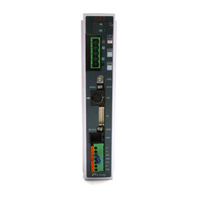IAI PCON-CF Manuals
Manuals and User Guides for IAI PCON-CF. We have 1 IAI PCON-CF manual available for free PDF download: Operation Manual
IAI PCON-CF Operation Manual (205 pages)
Positioner Type
Brand: IAI
|
Category: Controller
|
Size: 4 MB
Table of Contents
Advertisement
Advertisement
